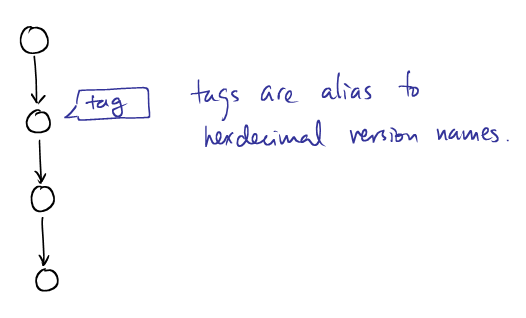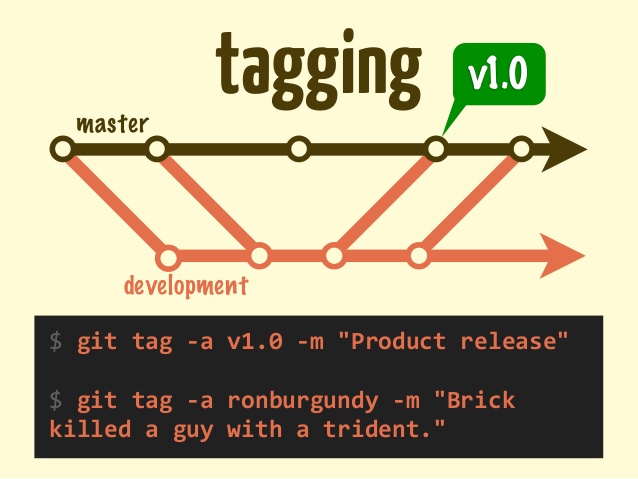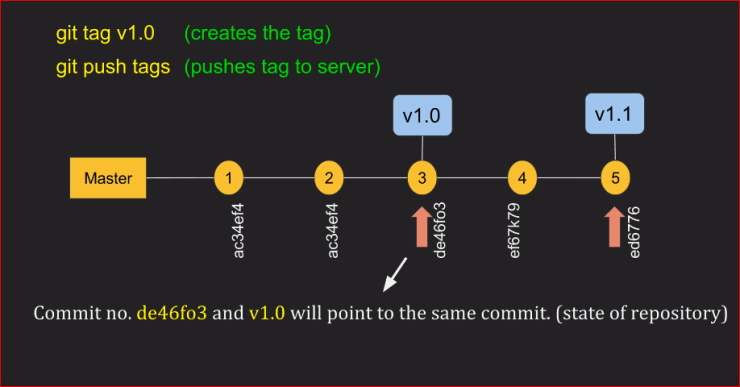Let’s start by explaining what a tag in git is

A tag is used to label and mark a specific commit in the history.
It is usually used to mark release points (eg. v1.0, etc.).
Although a tag may appear similar to a branch, a tag, however, does not change. It points directly to a specific commit in the history and will not change unless explicitly updated.

You will not be able to checkout the tags if it’s not locally in your repository so first, you have to fetch the tags to your local repository.
First, make sure that the tag exists locally by doing
# --all will fetch all the remotes. # --tags will fetch all tags as well $ git fetch --all --tags --prune
Then check out the tag by running
$ git checkout tags/<tag_name> -b <branch_name>
Instead of origin use the tags/ prefix.
In this sample you have 2 tags version 1.0 & version 1.1 you can check them out with any of the following:
$ git checkout A ... $ git checkout version 1.0 ... $ git checkout tags/version 1.0 ...
All of the above will do the same since the tag is only a pointer to a given commit.
origin: https://backlog.com/git-tutorial/img/post/stepup/capture_stepup4_1_1.png
How to see the list of all tags?
# list all tags $ git tag # list all tags with given pattern ex: v- $ git tag --list 'v-*'
How to create tags?
There are 2 ways to create a tag:
# lightweight tag $ git tag # annotated tag $ git tag -a
The difference between the 2 is that when creating an annotated tag you can add metadata as you have in a git commit:
name, e-mail, date, comment & signature

How to delete tags?
Delete a local tag
$ git tag -d <tag_name> Deleted tag <tag_name> (was 000000)
Note: If you try to delete a non existig Git tag, there will be see the following error:
$ git tag -d <tag_name> error: tag '<tag_name>' not found.
Delete remote tags
# Delete a tag from the server with push tags $ git push --delete origin <tag name>
How to clone a specific tag?
In order to grab the content of a given tag, you can use the checkout command. As explained above tags are like any other commits so we can use checkout and instead of using the SHA-1 simply replacing it with the tag_name
Option 1:
# Update the local git repo with the latest tags from all remotes $ git fetch --all # checkout the specific tag $ git checkout tags/<tag> -b <branch>
Option 2:
Using the clone command
Since git supports shallow clone by adding the --branch to the clone command we can use the tag name instead of the branch name. Git knows how to “translate” the given SHA-1 to the relevant commit
# Clone a specific tag name using git clone $ git clone <url> --branch=<tag_name>
git clone –branch=
--branchcan also take tags and detaches the HEAD at that commit in the resulting repository.
How to push tags?
git push --tags
To push all tags:
# Push all tags $ git push --tags
Using the refs/tags instead of just specifying the <tagname>.
Why?
- It’s recommended to use
refs/tagssince sometimes tags can have the same name as your branches and a simple git push will push the branch instead of the tag
To push annotated tags and current history chain tags use:
git push --follow-tags
This flag --follow-tags pushes both commits and only tags that are both:
- Annotated tags (so you can skip local/temp build tags)
- Reachable tags (an ancestor) from the current branch (located on the history)

From Git 2.4 you can set it using configuration
$ git config --global push.followTags true
